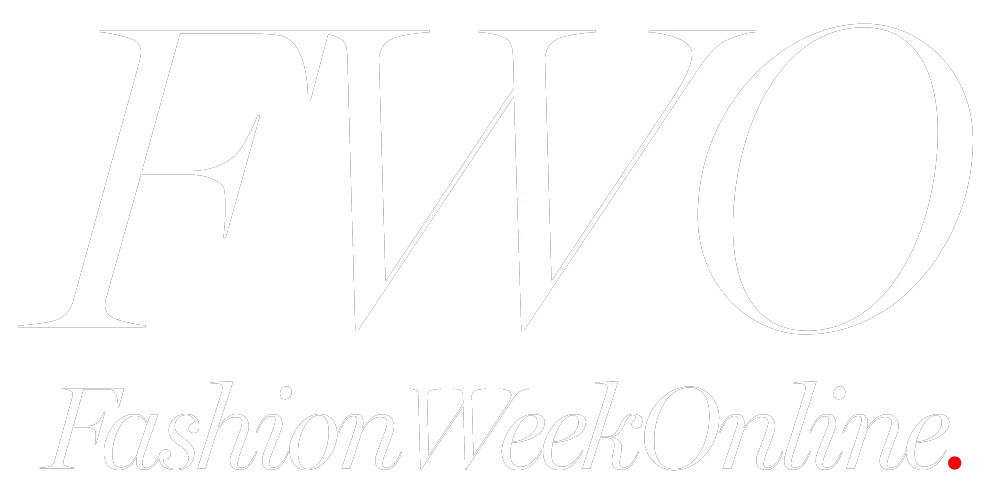Expanding your fashion and luxury business into global markets is a transformative journey that demands a deep understanding of market dynamics, cultural nuances, and strategic foresight. In this comprehensive guide, we’ll delve into the intricacies of international expansion, offering actionable insights and strategies to propel your luxury brand to new heights of success across borders.
Embracing Globalization: The Evolution of Fashion E-commerce
The Global Fashion Demand Continuum
The evolution of fashion e-commerce has been driven by an insatiable global demand for variety, accessibility, and exclusivity. Consumers worldwide seek unique fashion products that transcend geographical boundaries, driving the expansion of international e-commerce platforms.
Cultural Exchange and Trend Propagation
Social media and digital connectivity have accelerated the propagation of fashion trends globally. Cultural exchange fuels consumer curiosity and demand for international fashion, creating a dynamic market landscape ripe for strategic expansion, founded on a fine-tuned marketing strategy.
Lowering Market Entry Barriers: The Power of E-commerce Platforms
E-commerce platforms have democratized access to global markets, empowering emerging fashion brands to compete on a global scale. The ease of entry and reach afforded by these platforms have reshaped the industry, fostering innovation and competition for all luxury brand names.
The Advantages of Global Expansion for Fashion E-commerce
Revenue Growth and Market Diversification
Expanding into new markets not only increases sales revenue but also reduces reliance on specific regions or market segments. This diversification strategy spreads risk and can lead to more stable long-term growth, especially in volatile economic conditions.
Brand Visibility and Reputation Enhancement
Global expansion enhances brand visibility to a more global audience, making the brand more recognizable and trusted among diverse target audience segments. This recognition builds brand equity and can lead to increased customer loyalty for luxury fashion brands.
Operational Efficiency and Innovation Catalyst
Scaling up operations globally can drive efficiencies in production, distribution, and marketing. It also acts as a catalyst for innovation, as the need to adapt to different markets often leads to new product developments and improved processes.
Strategic Risk Mitigation
Diversifying across multiple markets helps mitigate risks associated with economic downturns, political instability, or market disruptions in specific regions. A global presence provides a buffer against localized crises.
Market Understanding and Adaptation
Entering new markets requires thorough research and an understanding of local preferences, cultures, and buying behaviors. This knowledge not only facilitates market entry but also enables strategic adaptation to effectively meet customer needs.
Localization Efforts and Cultural Sensitivity
Tailoring products, marketing strategies, and customer experiences to resonate with local cultures is essential for success in global markets. Cultural sensitivity and effective localization build rapport and trust with international customers.
Competition Dynamics and Differentiation Marketing Strategies
Understanding the competitive landscape in each target market is crucial for differentiation. Implementing unique value propositions, branding strategies, and customer experiences helps stand out amidst global competition.
Legal Compliance and Regulatory Navigation
Operating globally requires compliance with international trade laws, tax regulations, and customs procedures. Meticulous attention to legalities and regulatory frameworks ensures smooth cross-border operations.
Logistics Optimization and Supply Chain Management
Efficient logistics and robust supply chains are vital for seamless cross-border operations. Optimizing warehouse placement, shipping solutions, and customs procedures enhances customer satisfaction and reduces operational costs.
Strategies for Penetrating New Markets Successfully
Comprehensive Market Research and Segmentation
Thorough demographic analysis helps identify target customer segments, while trend evaluation informs product or service offerings that resonate with market preferences. Effective market segmentation guides the development of targeted marketing campaigns and tailored customer acquisition strategies, maximizing the chances of success in new markets.
Customer Acquisition and Engagement Strategies
Innovative approaches to customer acquisition, such as personalized experiences and interactive marketing, create meaningful connections with prospective customers. Implementing brand storytelling techniques captures attention and fosters long-term engagement and brand loyalty, which is essential for sustained success in new markets.
Language Services Integration
Bridging language barriers ensures clear communication and cultural understanding with international audiences. Multilingualism demonstrates respect for local customs and enhances brand relatability, increasing acceptance and trust among diverse demographics. For example, interpreters at Fashion Week act as bridges between languages spoken by designers, buyers, and media from all over the world. They facilitate communication by translating conversations, presentations, and negotiations, ensuring everyone is on the same page about the latest trends and business deals.
International Logistics and Fulfillment Optimization
Strategic logistics optimization, including warehouse placement and shipping solutions, reduces delivery times and costs, enhancing overall customer satisfaction. Streamlined customs procedures ensure smooth cross-border operations, minimizing disruptions and improving the efficiency of international supply chains.
Brand Partnerships and Collaborations
Collaborating with local influencers, retailers, and industry partners expands market reach for luxury brands and builds brand credibility and cultural relevance. Strategic partnerships enable access to new customer segments and distribution channels, accelerating market penetration and brand recognition in new markets.
Digital and Omnichannel Marketing Strategy
Localized digital marketing campaigns tailored to each market’s unique preferences and behaviors maximize brand visibility and customer engagement. Collaborating with influencers and leveraging omnichannel strategies across online and offline platforms create seamless customer experiences, driving conversions and brand advocacy in new markets.
Innovations in Global Expansion Strategies
AI and Data Analytics in Market Insights
Artificial intelligence (AI) and data analytics tools offer a deep understanding of market dynamics, enabling luxury brands to analyze consumer behavior patterns, predict market trends, and make data-driven decisions. By leveraging AI algorithms, companies can optimize marketing strategies, personalize customer experiences, and stay ahead of competitors in a rapidly evolving global market. Data-driven decision-making is essential for market insights. In addition to traditional fashion products, integrating advanced offerings such as fashion luxury tech gadgets can diversify product lines and attract tech-savvy luxury consumers.
Blockchain Technology in Supply Chain Transparency
Implementing blockchain technology enhances supply chain transparency by providing a decentralized and immutable record of transactions. This transparency fosters trust among stakeholders, ensures ethical sourcing practices, and strengthens quality assurance measures. Blockchain-powered supply chains also enable real-time tracking of goods, reducing inefficiencies and enhancing overall supply chain management.
Sustainable Practices and Ethical Branding
Embracing sustainability and ethical branding resonates strongly with luxury consumers who prioritize environmentally friendly and socially responsible businesses. For this reason, it is imperative for professionals in this industry to advocate ethical and environmentally responsible practices in both production and consumption, explains a current master in fashion and luxury business. By adopting sustainable practices, luxury brands contribute to a healthier planet, build brand loyalty, differentiate themselves in competitive markets, and secure long-term sustainability by aligning with evolving consumer values.
Virtual Reality (VR) and Augmented Reality (AR) in Customer Experiences
Integrating VR and AR technologies into customer experiences transforms interactions by offering immersive product showcases, virtual try-on experiences, and interactive storytelling. These technologies enhance engagement, enable personalized shopping experiences, and increase conversion rates by allowing customers to visualize products in real-world contexts, leading to higher satisfaction and repeat business.
Personalization and Customization Trends
The trend towards personalized and customized offerings caters to individual preferences, enhancing customer satisfaction and fostering brand loyalty. By leveraging data analytics and customer insights, luxury brands can create tailored and localized products, offer personalized recommendations, and provide interactive experiences that resonate with each customer segment. This approach not only drives sales but also strengthens brand-customer relationships over time.
Cross-Industry Collaborations and Diversification
Exploring collaborations and diversification across industries broadens market reach, unlocks new innovation potentials, and diversifies revenue streams for luxury brands. By partnering with complementary businesses, companies can access new customer segments, leverage existing infrastructures, and combine expertise to create an innovative global sales strategy. This strategic approach fosters resilience, stimulates growth, and positions businesses for success in diverse and dynamic global markets.
Overcoming Challenges and Future Trends
Regulatory Compliance and Global Standards
Navigating complex regulatory landscapes and adhering to global standards require ongoing diligence, legal expertise, and strategic partnerships to ensure compliance and minimize risks within the luxury market.
Data Privacy and Security Concerns
Addressing data privacy and security concerns requires robust cybersecurity measures, compliance with data protection regulations, and transparency in data handling practices.
Market Disruptions and Adaptability
Anticipating market disruptions, technological advancements, and consumer trends demands agility, adaptability, and a culture of innovation to stay ahead of the curve.
Sustainability Imperative and Green Initiatives
Embracing sustainability as a core business imperative drives eco-friendly practices, circular economy initiatives, and responsible consumption behaviors, aligning with global sustainability goals and consumer preferences.
Global Partnerships and Collaborative Innovation
Forging strategic partnerships, alliances, and collaborative networks fosters innovation, knowledge sharing, and market synergies, unlocking new growth opportunities and competitive advantages.
Future Trends in Fashion and Luxury Markets
Exploring emerging trends such as metaverse experiences, circular fashion models, experiential retail, and digital-first strategies anticipates future market dynamics and consumer preferences, enabling proactive adaptation and strategic positioning within the luxury sector.
Charting a Course for Global Success
Conquering new markets with your fashion and luxury brand is a multifaceted journey that demands strategic vision, adaptive strategies, and continuous innovation. By leveraging the power of globalization, embracing technological advancements, and aligning with evolving consumer preferences and global trends, your luxury brand can transcend borders, captivate international audiences, and achieve sustainable growth, resilience, and success in the dynamic fashion industry and luxury e-commerce landscape.
##
With love,
FWO




